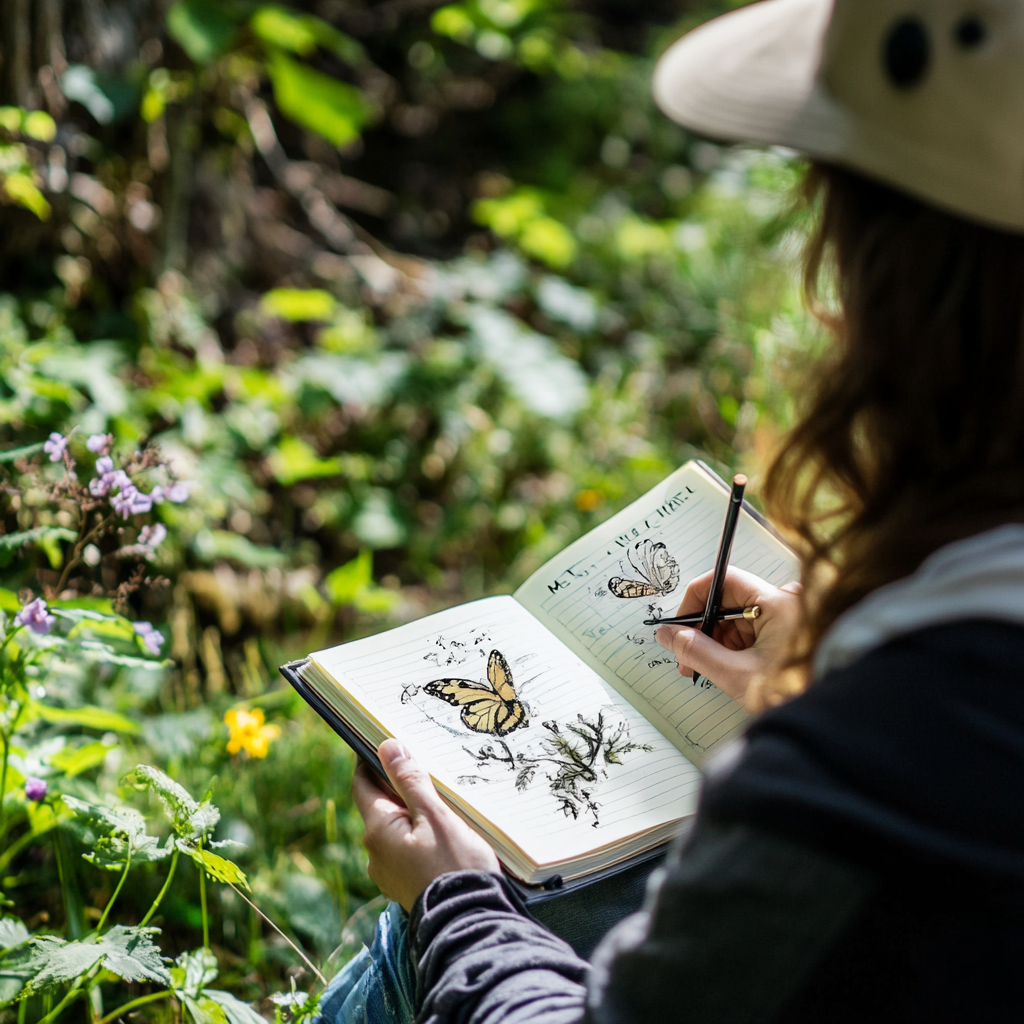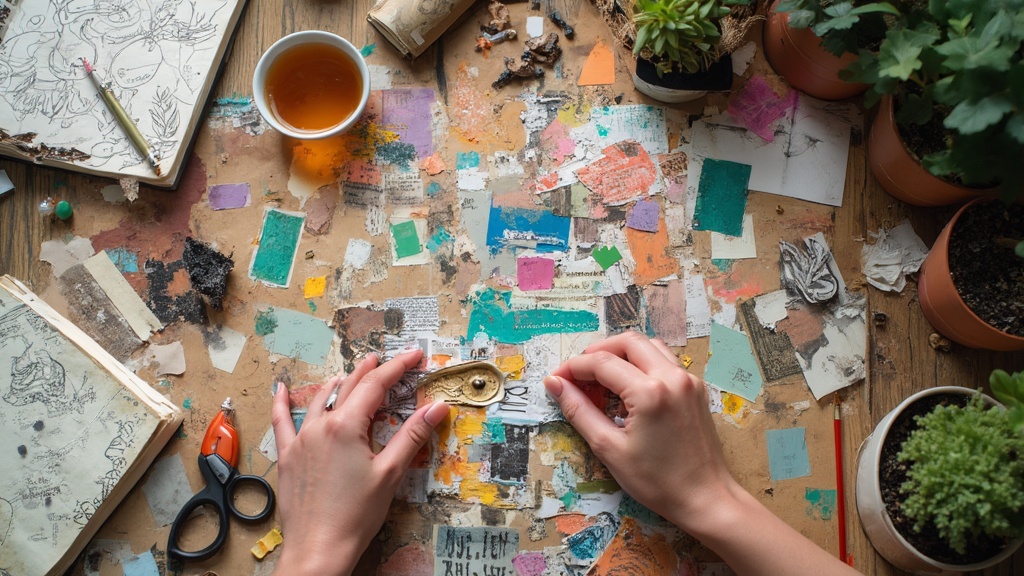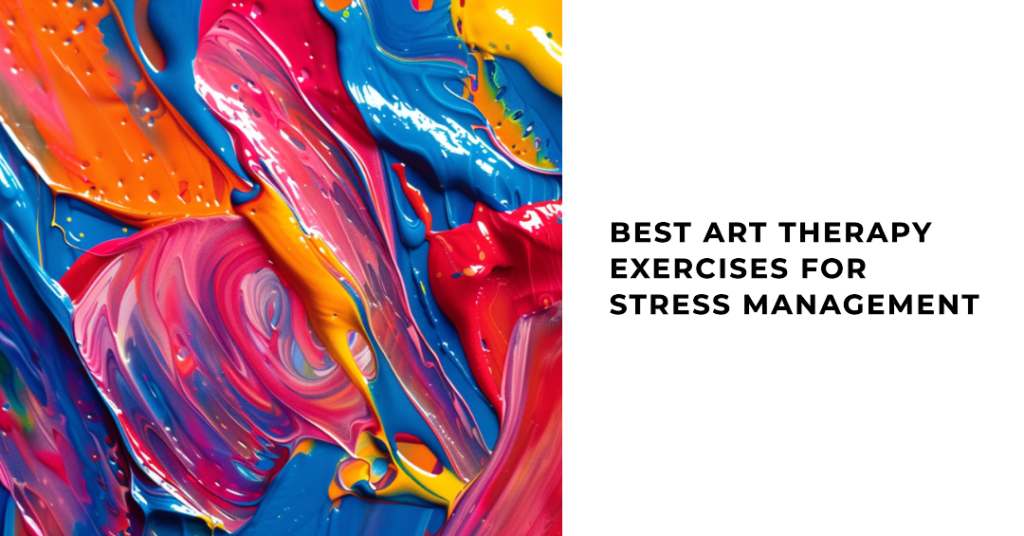7 Best Art Therapy Exercises for Relaxation

Table of Contents
Introduction: The Power of Art Therapy for Relaxation
In our fast-paced, stress-filled world, finding effective ways to relax and unwind is crucial for maintaining good mental health. Art therapy has emerged as a powerful tool for relaxation, offering a creative outlet that can help reduce stress, anxiety, and promote overall well-being. This blog post will explore seven of the best art therapy exercises for relaxation, providing you with practical techniques to incorporate into your daily routine.
Art therapy combines the creative process with psychological theory to promote healing and personal growth. It’s not about creating masterpieces, but rather about expressing yourself and engaging in a mindful, relaxing activity. As we delve into these exercises, remember that the goal is to enjoy the process and let go of any judgments about the final product.
If you’re interested in learning more about the field of art therapy and how to use these techniques professionally, consider exploring the Art Therapy Practitioner course. This comprehensive program can equip you with the skills to guide others through the healing power of art.
Now, let’s dive into the seven best art therapy exercises for relaxation, each designed to help you unwind, express yourself, and find inner calm.
1. Mandala Coloring

Time Required: 30-60 minutes
Materials Needed: Mandala coloring book or printed mandala designs, colored pencils, markers, or crayons
Mandala coloring is a popular and effective art therapy exercise for relaxation. Mandalas, circular designs with repeating patterns, have been used for centuries in various cultures as tools for meditation and spiritual growth. The act of coloring these intricate patterns can induce a state of mindfulness and calm.
To begin, choose a mandala design that appeals to you. You can find pre-drawn mandalas in coloring books or print them from online resources. Select your coloring tools – colored pencils, markers, or crayons work well. Find a comfortable, quiet space where you can focus without interruptions.
As you start coloring, pay attention to your breath and the sensations of the coloring process. Notice the texture of the paper, the sound of the pencil or marker against it, and the colors blending and filling the spaces. There’s no right or wrong way to color a mandala – let your intuition guide your color choices and patterns.
Many people find that coloring from the outside of the mandala towards the center helps to focus their attention and create a sense of moving inward. However, feel free to color in whatever way feels natural to you. The repetitive nature of coloring the intricate patterns can help quiet your mind and induce a meditative state.
Benefits:
A recent study published in the Journal of Clinical Nursing found that mandala coloring significantly reduced anxiety levels in cancer patients undergoing chemotherapy. The researchers noted that the activity provided a sense of control and distraction from negative thoughts, contributing to overall well-being during treatment.
For those interested in exploring more art therapy techniques for couples, check out our guide on art therapy activities for couples, which includes collaborative mandala exercises that can strengthen relationships while promoting relaxation.
2. Zentangle Drawing

Time Required: 15-30 minutes
Materials Needed: Paper (preferably small square tiles), fine-tipped black pen, pencil for shading (optional)
Zentangle is a meditative drawing method that involves creating beautiful images from repetitive patterns. It’s an easy-to-learn, relaxing, and fun way to create structured designs through drawing. The beauty of Zentangle is that it doesn’t require any artistic skill – anyone can do it!
To start, take a small square of paper (3.5 inches is standard, but any size will do) and a fine-tipped black pen. Begin by drawing a border around the edge of your paper. Then, lightly draw a string – a curved line or shape – across your paper. This string will divide your tile into sections.
Next, fill each section with a different pattern. These patterns, called “tangles,” are made up of simple shapes like dots, lines, curves, and orbs. There are hundreds of established tangle patterns you can learn, or you can create your own. The key is to focus on one stroke at a time, allowing your mind to enter a state of flow and relaxation.
As you draw, try to let go of any expectations about how your Zentangle should look. Embrace imperfections and enjoy the process. If you like, you can add shading with a pencil to give your design more depth and dimension.
Benefits:
The Zentangle method has been widely adopted in various settings, including schools and therapy offices. A case study from the VA Greater Los Angeles Healthcare System highlights how art classes, including Zentangle-inspired activities, have been beneficial for veterans. These classes combine free art lessons with therapy, helping veterans express themselves and find relaxation through creative activities.
For those dealing with addiction recovery, art therapy techniques like Zentangle can be particularly helpful. Learn more about how art therapy can support the recovery process in our article on art therapy for addiction recovery.
3. Nature Journaling

Time Required: 30-60 minutes
Materials Needed: Sketchbook or journal, pencils, pens, colored pencils or watercolors (optional), magnifying glass (optional)
Nature journaling is a wonderful way to combine the relaxing benefits of being in nature with the mindful practice of artistic observation. This exercise involves spending time outdoors, observing your surroundings, and recording what you see through a combination of sketching, writing, and sometimes data collection.
To begin, find a comfortable spot in nature – this could be in your backyard, a local park, or any green space. Bring your sketchbook and drawing materials. Start by taking a few deep breaths and really observing your surroundings. What do you see, hear, smell, and feel?
Choose something that catches your attention – it could be a leaf, a flower, an insect, or a landscape view. Begin sketching what you see. Don’t worry about creating a perfect drawing; the goal is to observe closely and record your observations. You can add notes about colors, textures, or any thoughts that come to mind.
As you draw and write, try to stay present in the moment. Notice the details of what you’re observing – the veins in a leaf, the pattern on a butterfly’s wing, the way light filters through the trees. This focused attention can help quiet your mind and induce a state of calm.
Benefits:
The therapeutic effects of combining nature and art have been well-documented. A study published in the journal Medical Tourism highlighted how healing gardens in hospitals, which often incorporate elements of nature journaling, can significantly reduce stress and improve patient outcomes. These gardens provide a serene environment for patients to engage with nature, often through artistic activities, leading to shorter post-operative stays and reduced need for pain medication.
For those interested in exploring more art therapy techniques for personal growth, our article on art therapy for personal development and self-discovery offers additional insights and exercises.
4. Expressive Painting

Time Required: 45-90 minutes
Materials Needed: Canvas or thick paper, acrylic or watercolor paints, brushes of various sizes, water container, palette or plate for mixing colors
Expressive painting is a powerful art therapy technique that allows you to release emotions and express yourself freely through color and form. This exercise is not about creating a realistic image, but rather about using the act of painting as a way to explore and process your feelings.
To begin, set up your painting materials in a comfortable space where you won’t be disturbed. Take a few deep breaths and try to connect with how you’re feeling in the moment. Choose colors that resonate with your current emotional state – don’t overthink this, just go with your intuition.
Start applying paint to your canvas or paper. You might begin with broad strokes of color, or you might feel drawn to create specific shapes or patterns. There’s no right or wrong way to do this – the key is to let your emotions guide your movements and color choices.
As you paint, try to stay present with your feelings and the sensations of painting. Notice the texture of the paint, the way the colors blend, the movement of your arm and hand. If thoughts or emotions arise, acknowledge them and try to express them through your painting.
You can continue adding layers, blending colors, or creating new forms until you feel a sense of completion. Remember, the goal is not to create a masterpiece, but to use the process of painting as a way to express and release emotions.
Benefits:
Expressive painting has been particularly effective in helping individuals process trauma and difficult emotions. Our article on 10 art therapy exercises for trauma recovery provides more in-depth information on how this and other art therapy techniques can support healing from traumatic experiences.
For those interested in exploring more creative approaches to art therapy with adults, our guide on 10 creative ways to use art therapy with adults offers additional techniques and insights.
5. Clay Sculpting

Time Required: 30-60 minutes
Materials Needed: Air-dry clay or modeling clay, clay tools (optional), work surface (like a wooden board or plastic mat)
Clay sculpting is a tactile and grounding art therapy exercise that can be incredibly relaxing and meditative. The process of working with clay engages your sense of touch and can help release tension in your hands and body.
To begin, take a piece of clay and start warming it up in your hands. Knead and squeeze the clay, noticing its texture and temperature. As you work with the clay, try to let go of any preconceived ideas about what you’re going to make. Instead, focus on the sensations in your hands and how the clay feels.
You might start by creating a simple shape, like a sphere or a cube. From there, you can begin to mold and shape the clay however you like. You might find yourself drawn to creating an abstract form, or you might feel inspired to sculpt something more representational.
As you sculpt, pay attention to your breathing and try to maintain a relaxed, mindful state. If you find your mind wandering, gently bring your attention back to the sensations of working with the clay. You can use your fingers or clay tools to add texture or details to your sculpture.
Remember, the goal is not to create a perfect sculpture, but to enjoy the process of working with the clay and expressingyourself through this tactile medium.
Benefits:
Clay sculpting has been shown to be particularly effective in helping children express themselves and develop emotional regulation skills. Our article on art therapy for getting the best out of children explores how clay work and other art therapy techniques can support child development and emotional well-being.
6. Collage Making

Time Required: 45-90 minutes
Materials Needed: Magazines, newspapers, photographs, colored papers, scissors, glue stick, large paper or cardboard for the base
Collage making is a versatile and accessible art therapy exercise that allows you to express yourself through images and textures. This technique can be particularly helpful for those who feel intimidated by drawing or painting, as it relies on selecting and arranging existing images rather than creating them from scratch.
To begin, gather a variety of materials with interesting images and textures. Flip through magazines or newspapers, looking for images, words, or patterns that resonate with you. Don’t overthink your choices – trust your intuition and select items that catch your eye or evoke a feeling.
Once you have a collection of images, start arranging them on your base paper or cardboard. There’s no need to have a specific theme or plan – allow yourself to play with different arrangements and combinations. You might find that certain images naturally group together or that unexpected juxtapositions create interesting effects.
As you work, pay attention to the feelings and associations that arise. Collage making can often reveal subconscious thoughts or emotions, providing insights into your inner world. Once you’re satisfied with your arrangement, glue the pieces down.
Benefits:
Collage making has been found to be particularly effective in addressing depression and anxiety. Our article on art therapy activities for depression provides more information on how this and other techniques can support mental health and emotional well-being.
7. Mindful Doodling

Time Required: 15-30 minutes
Materials Needed: Paper, pen or pencil
Mindful doodling, also known as intuitive drawing, is a simple yet powerful relaxation technique that combines the benefits of mindfulness meditation with the creative act of drawing. This exercise allows you to express yourself freely without the pressure of creating a specific image or design.
To begin, find a comfortable place to sit and have your paper and drawing tool ready. Take a few deep breaths to center yourself. Then, without any particular goal in mind, begin to make marks on your paper. These could be lines, shapes, patterns, or any forms that come naturally to you.
As you doodle, try to maintain a state of mindful awareness. Notice the sensation of the pen or pencil on the paper, the movements of your hand, and the shapes that emerge. If your mind starts to wander, gently bring your attention back to the act of drawing.
Don’t worry about what your doodles look like or whether they make sense. The goal is to engage in the process of drawing without judgment or expectation. You might find that certain patterns or images repeat themselves, or that your doodles evolve into more recognizable forms – simply observe these developments with curiosity.
Benefits:
Mindful doodling can be an excellent tool for stress reduction and relaxation. Our article on art therapy activities for stress reduction provides more information on how this and other art therapy techniques can help manage stress and promote overall well-being.
Conclusion: Embracing Art Therapy for Relaxation and Well-being
As we’ve explored in this blog post, art therapy offers a wide range of exercises that can help promote relaxation, reduce stress, and enhance overall well-being. From the meditative practice of mandala coloring to the tactile engagement of clay sculpting, each of these seven exercises provides a unique way to express yourself creatively and find inner calm.
Remember, the key to benefiting from these art therapy exercises is to approach them with an open mind and without judgment. Focus on the process rather than the end result, and allow yourself to explore and express freely. With regular practice, you may find that these creative activities become valuable tools in your self-care routine, helping you manage stress, process emotions, and cultivate mindfulness in your daily life.
If you’re interested in delving deeper into the field of art therapy, consider exploring the Art Therapy Practitioner Certification Course. This comprehensive program can provide you with the knowledge and skills to use art therapy techniques professionally, helping others on their journey to relaxation and self-discovery.
For those looking to expand their art therapy toolkit, our 50 Art Therapy Exercises for Children, Adults, and Seniors resource offers a wealth of additional activities and techniques to explore.
Explore More
- Art Therapy Activities for Couples
- Art Therapy for Addiction Recovery
- 10 Art Therapy Exercises for Trauma Recovery
- 10 Creative Ways to Use Art Therapy with Adults
- Art Therapy: Getting the Best Out of Children
- Art Therapy Activities for Depression
- Art Therapy Activities for Stress Reduction
- Art Therapy for Personal Development and Self-Discovery
By incorporating these art therapy exercises into your life, you’re taking an important step towards better mental health and emotional well-being. Remember, creativity is not about perfection – it’s about expression, exploration, and finding joy in the process. So pick up that paintbrush, pencil, or clay, and start your journey towards relaxation through art therapy today!










Responses